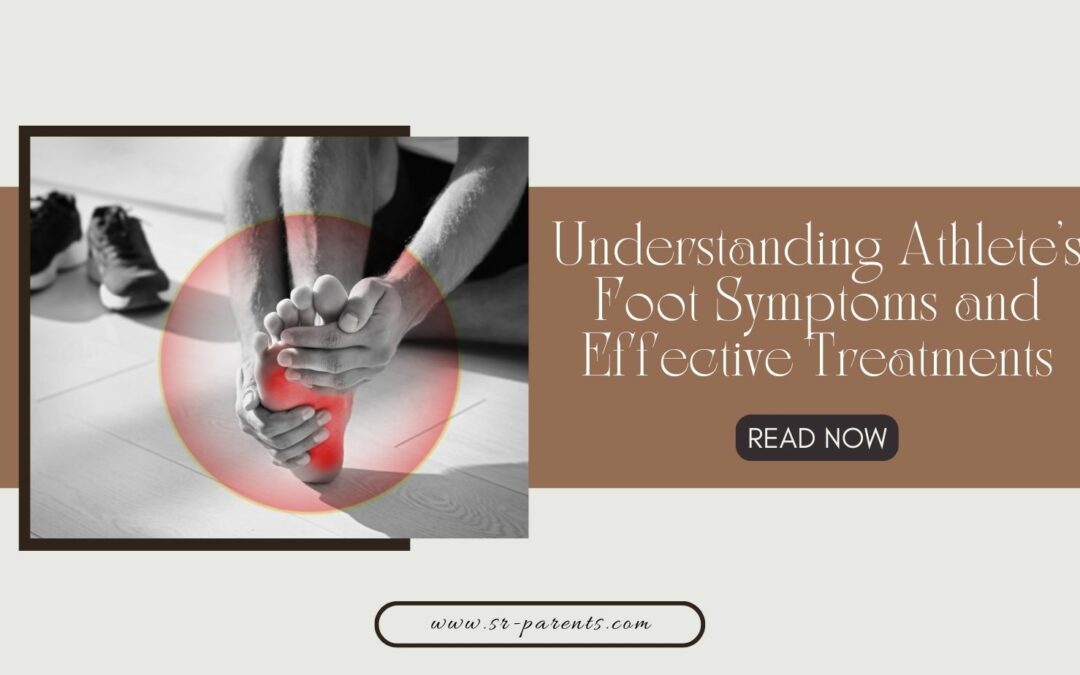Contents
Understanding Athlete’s Foot: Symptoms and Treatments for People of All Ages
Are you or your loved one experiencing discomfort or irritation on your feet? It could be an athlete’s foot, a common fungal infection that affects many individuals. Athlete’s foot, also known as tinea pedis, is caused by fungal species like Trichophyton, Epidermophyton, and Microsporum. This blog will overview an athlete’s foot symptoms, helping you recognize the signs and take appropriate action. It can be quite helpful to our seniors and caregivers since anyone may be susceptible to this disease.
Athletes’ foot manifests through various symptoms, which are important to identify for early diagnosis and treatment. The affected skin typically undergoes redness, inflammation, peeling, and cracking, creating an uncomfortable and unsightly appearance. Itching and a burning sensation are also common, often leading to persistent discomfort. Additionally, the condition may result in blisters, dryness, scaling, and even the involvement of toenails.
Recognizing the symptoms of an athlete’s foot is crucial for timely intervention. It allows you to seek appropriate medical attention and prevent complications such as bacterial infections, recurrent or chronic athlete’s foot, and the spread of the infection to other parts of your body.
This blog will delve deeper into athlete’s foot symptoms and provide valuable insights into diagnosis, treatment options, preventive measures, and lifestyle management. By understanding the signs of an athlete’s foot, you can take proactive steps to prevent its occurrence and promote good foot hygiene. Let’s explore the various symptoms and empower ourselves to combat this fungal infection effectively.
Causes of Athlete’s Foot for All Ages
The athlete’s foot is caused by various factors contributing to the development and spread of the fungal infection. Understanding the causes can help in prevention and effective management. Remember also that the elderly population is particularly susceptible to developing athlete’s foot due to several factors. Firstly, their immune system weakens as people age, making them more vulnerable to infections. This weakened immune response can allow the fungus responsible for the athlete’s foot to proliferate and cause an infection. Hence, it’s an issue that needs attention.
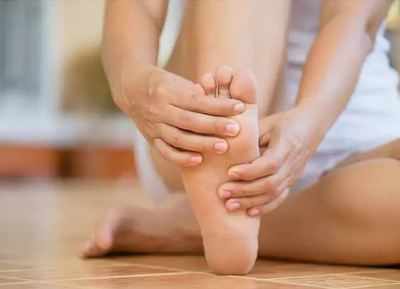
Fungal Species
Different types of fungi play a significant role in causing athlete’s foot. The most common fungal species responsible for this condition include:
- Trichophyton: This fungus is the primary cause of athlete’s foot and is responsible for about 80% of cases. It thrives in warm, moist environments like locker rooms or public showers.
- Epidermophyton: Another common fungus that can cause athlete’s foot, though less frequently than Trichophyton. It also favors warm and humid areas, making swimming pools or public swimming areas potential sources of infection.
- Microsporum: While less common, Microsporum can also contribute to an athlete’s foot. This fungus is more likely to cause other fungal infections, such as ringworm, but can still affect the feet in certain cases.
Risk Factors
Several risk factors increase the susceptibility to athlete’s foot. These include:
- Environment: Walking barefoot in public areas like swimming pools, locker rooms, or communal showers can expose your feet to the fungi responsible for an athlete’s foot.
- Poor Hygiene: Insufficient foot hygiene, such as improperly washing and drying the feet, provides an ideal environment for fungi to thrive.
- Weakened Immune System: Individuals with weakened immune systems, such as diabetes, HIV/AIDS, or undergoing chemotherapy, are more prone to developing fungal infections like athlete’s foot.
Symptoms of Athlete’s Foot
Athlete’s foot, also known as tinea pedis, is a common fungal infection that primarily affects the feet. Recognizing the symptoms of an athlete’s foot is crucial for timely diagnosis and appropriate treatment. Older people need to be mindful of the symptoms of this condition. Take note that factors like reduced mobility and difficulty with proper foot hygiene can contribute to the higher incidence of athlete’s foot among the elderly. Limited mobility may lead to prolonged periods of moisture accumulation between the toes, creating an ideal environment for the fungus to thrive. With their immune system weakened, they need to identify if they have it or otherwise to be on the safe side.
We will explore the various symptoms associated with an athlete’s foot and their manifestations.
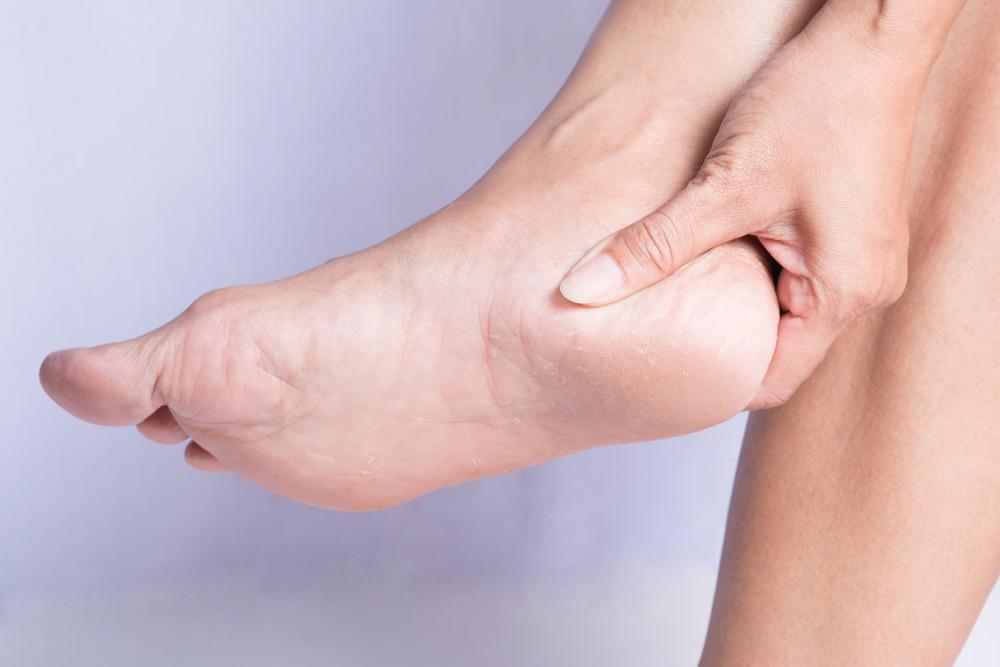
Skin Changes
One of the primary indications of an athlete’s foot is noticeable changes in the affected area’s skin. These changes can include redness and inflammation, peeling and cracked skin, blistering, and dryness with scaling.
Redness and Inflammation
Redness and inflammation are often the initial signs of an athlete’s foot. The affected skin may appear reddened and swollen, accompanied by a warm sensation. This inflammation results from the body’s immune response to the fungal infection.
Peeling and Cracked Skin
As the athlete’s foot progresses, the skin may peel and dry. This peeling can occur in small flakes or larger skin sections, leading to discomfort and itchiness. Cracked skin is also common, especially in areas frequently exposed to friction and moisture.
Blistering
In some cases, an athlete’s foot can cause the formation of fluid-filled blisters. These blisters may be small or larger and can cause additional discomfort and pain. Popping the blisters can increase the risk of spreading the infection to other parts of the body.
Dryness and Scaling
Dryness and skin scaling are typical symptoms of an athlete’s foot. The affected skin may appear dry, rough, and scaly, resembling a dry patch or a flaky texture. Itching is often associated with this symptom.
Itching and Burning Sensation
One of the most common complaints of individuals with athlete’s foot is intense itching. The affected area may feel itchy and uncomfortable, leading to scratching and further irritation. Additionally, a burning sensation can accompany the itching, causing significant discomfort.
Odor
An athlete’s foot can also be associated with an unpleasant odor. The combination of moisture, fungal overgrowth, and bacteria can create a distinct smell. Proper hygiene practices can help alleviate this symptom.
Pain or Discomfort
In some cases, an athlete’s foot can cause pain and discomfort. The affected skin may be sensitive and tender to the touch, and walking or wearing shoes can exacerbate the discomfort. Severe athlete foot cases can even lead to pain during daily activities.
Involvement of Toenails
The athlete’s foot can spread to the toenails, resulting in onychomycosis. Infected toenails may become discolored, thickened, brittle, and crumbly. The nail may also separate from the nail bed, causing further discomfort.
Treatment Options for Athlete’s Foot Symptoms
Athletes’ foot symptoms can be effectively managed with various treatment options. There are several approaches to address this common fungal infection, from self-care and prevention measures to over-the-counter (OTC) medications and prescription treatments. The treatment of athlete’s foot in the elderly is generally similar to that in people of other age groups. The primary goal is to eliminate the fungal infection and alleviate symptoms.
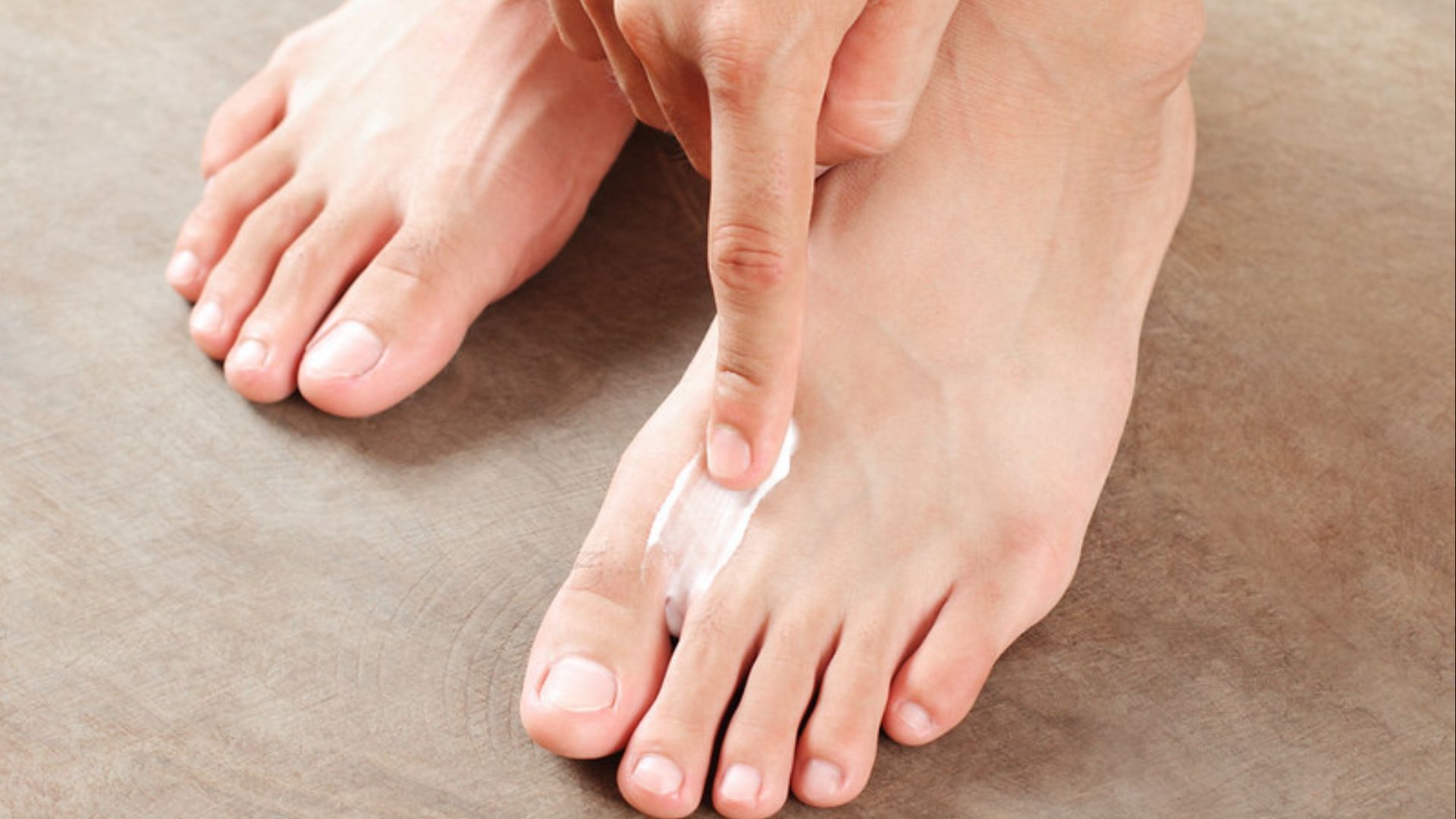
Self-Care and Prevention
Taking proactive steps to care for your feet and prevent athlete’s foot can significantly contribute to symptom relief and reduce the risk of recurrence. If our older people can, we must encourage them to do hygienic practices to keep their feet and other parts of the body clean.
Keeping Feet Clean and Dry
Maintaining proper foot hygiene is essential in managing an athlete’s foot symptoms. Regularly washing your feet with mild soap and warm water and ensuring they are thoroughly dried afterward can help eliminate moisture that fungus thrives on.
Changing Socks and Shoes Regularly
Wearing clean socks made of breathable materials, such as cotton, and changing them daily can prevent moisture buildup and the spread of fungal cells. Similarly, alternating shoes daily allows them to dry out completely, reducing the chances of reinfection.
Using Antifungal Powders or Sprays
Applying antifungal powders or sprays directly onto the feet and inside shoes can help kill the fungus and inhibit its growth. These products, readily available over the counter, effectively control athlete’s foot symptoms.
Over-the-Counter (OTC) Medications
Over-the-counter antifungal medications play a crucial role in managing athletes’ foot symptoms. They typically come in creams, ointments, powders, or sprays containing active ingredients like clotrimazole, miconazole, or terbinafine. These medications work by eliminating the fungus causing the infection.
Prescription Medications
In more severe cases or when OTC treatments fail to provide relief, healthcare professionals may prescribe stronger antifungal medications.
Topical Antifungal Creams
Prescription-strength topical antifungal creams may be recommended for persistent or severe athlete foot symptoms. These creams contain higher concentrations of active ingredients and are applied directly to the affected areas for a specified duration.
Oral Antifungal Medications
Oral antifungal medications may be prescribed if the infection is widespread or resistant to topical treatments. These medications work systemically to eliminate the fungus from within the body.
Home Remedies and Alternative Treatments
While not a substitute for medical treatment, some individuals may find relief from athlete’s foot symptoms through complementary home remedies or alternative treatments. Tea tree oil, for example, has antifungal properties and can be applied topically. However, it’s important to note that these remedies should be used under the guidance of a healthcare professional.
Prevention Strategies to Avoid Athlete’s Foot
An athlete’s foot, a common fungal infection, can cause discomfort and inconvenience. Fortunately, there are effective prevention strategies to avoid contracting this condition. We will explore these prevention strategies in detail, helping you proactively protect yourself from this troublesome fungal infection.
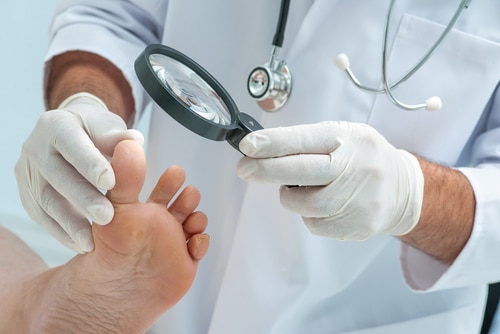
Maintaining Good Foot Hygiene
Proper foot hygiene is essential for preventing athlete’s foot. Regularly clean your feet with mild soap and warm water. Pay special attention to the spaces between your toes and ensure thorough drying afterward. This practice helps eliminate moisture, making it difficult for the fungus to thrive. Wash your feet daily, especially after activities that cause sweating. Elderly folks may need help keeping their feet clean and dry due to various factors.
Avoiding Walking Barefoot in Public Areas
Walking barefoot in public areas, such as swimming pools, locker rooms, and communal showers, increases the risk of contracting an athlete’s foot. The fungus can be present on contaminated surfaces. For our elderly population, they don’t have as much protection for their feet like before. So they are susceptible to injuries and infections. To prevent infection, always wear sandals or flip-flops in such environments. These protective barriers reduce direct contact with the fungus and minimize the chances of transmission.
Wearing Appropriate Footwear in Moist Environments
Moist environments provide an ideal breeding ground for fungi. Opt for breathable footwear when engaging in activities that may result in sweaty feet, such as exercise or prolonged periods of wearing closed-toe shoes. Choose shoes made from materials that allow air circulation, such as leather or mesh, to help keep your feet dry and prevent fungal growth.
Keeping Feet Dry and Well-Ventilated
Moisture is a contributing factor to an athlete’s foot. Ensure your feet are dry and well-ventilated throughout the day. After bathing or participating in water-related activities, thoroughly dry your feet, including the areas between the toes. Avoid damp socks or shoes, as they create a humid environment promoting fungal growth. Consider using talcum or antifungal powder on your feet to help absorb excess moisture.
Act Now to Prevent Fungal Infections
Athletes’ foot symptoms can cause discomfort and affect their daily life. It can affect people in various age groups, yet seniors are more susceptible to it due to many issues. By being proactive and understanding the signs, you can immediately prevent the spread of fungal infections. The importance of timely diagnosis and treatment cannot be overstated, as it is crucial to your overall foot health. In the care of our seniors, we need to check on them from time to time. It’s to ensure that they don’t develop this disease or get help when it surfaces. Prevention is key to avoiding an athlete’s foot. Maintain good foot hygiene by keeping your feet clean and dry, changing socks regularly, and using antifungal powders or sprays. Avoid walking barefoot in public areas like locker rooms and swimming pools, and choose appropriate footwear for ventilation.
By recognizing the symptoms, seeking prompt medical attention, and implementing preventive measures, you can effectively manage an athlete’s foot and promote good foot hygiene. Don’t let an athlete’s foot hold you back. Act now to protect your feet and keep fungal infections at bay.
Frequently Asked Questions
How is an athlete's foot diagnosed?
A doctor can diagnose an athlete’s foot by examining the affected area and considering the individual’s medical history. In some cases, laboratory tests such as a KOH test or a fungal culture may be performed to confirm the presence of fungal cells.
What are the risk factors for developing an athlete's foot?
Athletes’ foot is more likely to occur in individuals who frequently visit public swimming pools, locker rooms, or other moist environments. Poor foot hygiene, wearing tight or non-breathable shoes, and keeping the feet wet for extended periods can also increase the risk. Additionally, having a weakened immune system and a previous fungal skin infection can make a person more susceptible.
How can an athlete's foot be treated?
Treatment options for athletes’ feet include self-care measures, over-the-counter (OTC) medications, and prescription antifungal medications. Self-care measures involve:
- Keeping the feet clean and dry.
- Changing socks regularly.
- Using antifungal powders or sprays.
OTC medications such as antifungal creams can help alleviate symptoms. A doctor may prescribe topical or oral antifungal medications in more severe or persistent cases.
Can an athlete's foot spread to other parts of the body or other people?
The athlete’s foot is contagious and can spread through direct contact with the infected skin or contact with contaminated surfaces, such as towels or shoes. If left untreated, the infection can spread to other body parts, such as the hands or groin, leading to secondary bacterial infections.
How can an athlete's foot be prevented?
Preventive measures include maintaining good foot hygiene, avoiding walking barefoot in public areas, wearing appropriate footwear in moist environments, and keeping the feet dry and well-ventilated. Washing socks and towels in hot water and disinfecting shoes regularly is also important. Using antifungal powders or sprays can help prevent recurrence.
? Seeking engaging content, insightful product reviews, and a place to connect with like-minded individuals? Look no further! Visit our social media accounts and unlock valuable resources and heartfelt discussions.
?? Join our vibrant community on Facebook ?: Facebook Page. Be inspired by heartwarming stories, stay updated on the latest trends, and connect with caregivers and senior care enthusiasts from around the globe.
? Immerse yourself in a visual journey on Instagram ?: Instagram Profile. Discover captivating images, informative posts, and valuable caregiving and senior care insights. Double-tap your way through a world of compassion and support.
? Pin your way to inspiration on Pinterest ?: Pinterest Boards. Unleash your creativity and explore curated boards with practical tips, innovative ideas, and endless inspiration. Find your next project and share your discoveries with our vibrant community.
? Stay connected and in-the-know on Twitter ?: Twitter Handle. Join the conversation, share your thoughts, and receive real-time updates on caregiving trends, senior care news, and community events. Together, we’ll shape a brighter future for our beloved seniors.
? Don’t miss out on this incredible opportunity to connect with a passionate community dedicated to caregiving and senior care! Follow us on Facebook, Instagram, Pinterest, and Twitter today!

